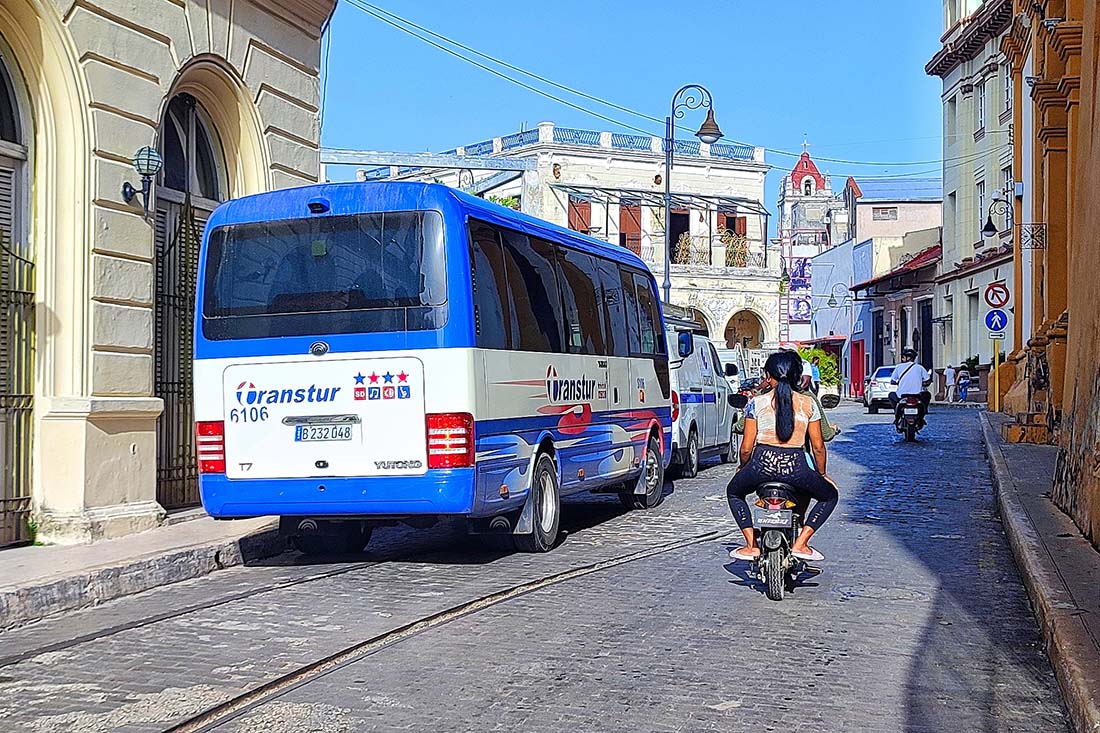By: Nelida Lopez Avila
The parking policy is an important element in the general strategy of circulation and road planning and represents a notable effect of attracting traffic that must be considered when evaluating the impacts on the road system and the rest of circulation.
The historic center of Camagüey has unfavorable characteristics, from the point of view of road infrastructure, which hinder its proper functioning. The average sections of the tracks are between 4.50 and 6.50 meters approximately.
It has a high land occupation, which causes a deficit of parking areas. Many times, in the main axes of the city, traffic obstruction and deterioration of the urban landscape can be observed, due to the parking of large or small cars that, due to the lack of spaces for this purpose, are parked on the road, being this, one of the variables that most affects the capacity of the roads, in addition to causing delay and irritation to those who travel through them.
A diagnosis of the current situation shows that management and control in this sense is minimal, as it is observed that certain routes are being subjected to demands close to their capacity and even higher.
As an alternative, parking has been authorized on transverse axes that do not have a strong vehicular flow. But the management basically refers to the installation of prohibition signs, while the general lack of control in the city allows users to systematically violate them.
The non-existence of more efficient mechanisms finds its explanation mainly in the lack of perception of the costs and social benefits that derive from the provision of parking on the road.
For our Historic Center
In the area declared Cultural Heritage of Humanity, the parking service also becomes more complex, as a consequence of the large number of services to the population and tourism that are developed both in urban areas and in public spaces, which consequently generate high pedestrian flows and vehicles.
This concentration of service facilities gives rise to a transport system for loading and unloading merchandise belonging to companies with generally medium-tonnage equipment that periodically violates the established schedules and penetrates the center occupying large areas of the street and obstructing the passage of vehicles and people.
The problem regarding the parking of small vehicles, which generate the greatest amount of movement and use of parking lots, is fundamentally due to the insufficiency of lots destined for parking, and many of those that exist are reserved for business use.
Important data
The difference between the capacity of the road and the existing demand can be reduced through an appropriate management of the geometric and strategic variables of the road supply, through administrative -and sometimes economic- regulations that promote a more efficient use of this infrastructure.
The situation can be summarized in the following aspects:
-Increase in the level of motorization in the area.
-Lack of investment to solve the difficulties associated with the parking function.
-Compromise for other uses of spaces with potential for parking.
-Lack of mechanisms to provide parking services safely on the road.
-Lack of parking fences and lots with the potential to assume this use, as well as underuse and poor management of existing ones.
-Uncontrolled use of the road for parking purposes.
-Inadequate and insufficient signaling of both official parking spaces and areas where this use is prohibited or allowed.
Over the years, actions have been taken to solve the parking problem for bikes, bicycles and small vehicles in the city center. The next alternative should be aimed at carrying out a new and different ordering of the existing facilities for this service and the development of investments in lots destined for it.
The change in the use of facilities for parking in these years and the characteristics of the roads in the aforementioned areas have led to a shortage of spaces of approximately 800 billboards, without a solution that satisfies at least 50 % of this need.
Meeting parking requirements must be a primary objective within mobility and public space policies. These must respond to existing demands and also avoid infractions that negatively affect both the mobility of vehicles and people and road safety, apart from the visual intrusion caused by the indiscriminate permanence of cars on the road.
Nowadays, the degree of motorization in our city is 33 cars per 1000 inhabitants. If, due to the aforementioned characteristics, such problems exist with such a low figure, then what would be the situation if this level were to increase?
This data is revealing in relation to the persistence of a real problem: finding the right place to park. That is why we urgently need the contribution of new proposals and find solutions that have a positive impact on the mobility of the historic center and the entire city.
Translated by: Aileen Álvarez García






